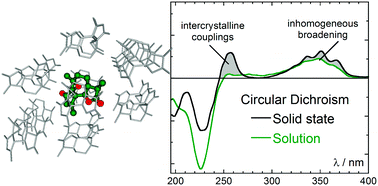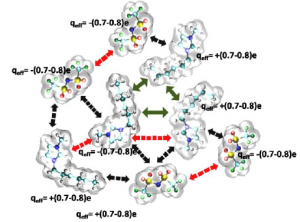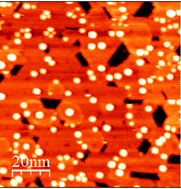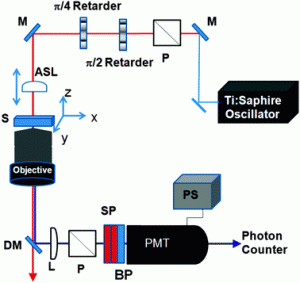Chiral structures interact with circularly polarised light. Gennaro Pescitelli and co-workers have investigated the effects of the close contact between handed molecules in micro-crystals in their interaction with light. The well-rounded study explains—as promised–the specific case, but does it take us closer to a general structure-property relationship regarding the preferential absorption of one handedness of light? And is such as a correlation even possible?

Chirality and the word chiral derive from the Greek word cheir or hand: chiral can be read as handed and chirality as handedness. The definition of a chiral object is that it cannot be superimposed on its mirror image, just as our hands. Chirality is hugely important as every biological building block that makes up our hands, and indeed the rest of us, is handed. It comes in a left-hand and a right-hand form.
As it is the entire biological machinery on earth is almost exclusively left-handed. How this came about, we do not know, but it is suggested that we, in our part of space, have an abundance of circularly polarised light emitters of a certain handedness, and that this has caused the handedness of our biology. Chirality and circularly polarised light are linked. Each can be described of having a specific handedness and one handedness of light interacts with one handedness of chiral matter. An abundance of right-handed light in our part of the universe may have induced the single handedness of our biology.
In order to figure out how the homo-chirality of the biosphere on earth arose, we need to understand how circularly polarised light and chiral material interacts; exactly what Gennaro Pescitelli and co-workers are investigating. Studies like this, where experiment and highly advanced theory is used to correlate observations and the chiral structure of the material, are needed if we are to understand how chirality in a molecular framework absorbs one specific handedness of light.
We understand how regular material (not handed) and normal light (linearly polarised) interact, and how to design materials that interact with light in a desired fashion. We cannot yet design materials that absorb a specific handedness of light. The paper ”Intermolecular exciton coupling and vibronic effects in solid-state circular dichroism: a case study” by Gennaro Pescitelli, Daniele Padula and Fabrizio Santoro takes us one step closer, it was published in of Physical Chemistry Chemical Physics 2013, 15, 795-802.
by Dr Thomas Just Sørensen
Read this fascinating study today:
Intermolecular exciton coupling and vibronic effects in solid-state circular dichroism: a case study
Gennaro Pescitelli, Daniele Padula and Fabrizio Santoro
DOI: 10.1039/C2CP43660D














